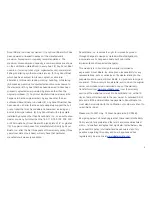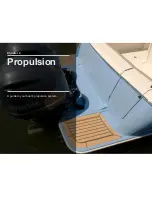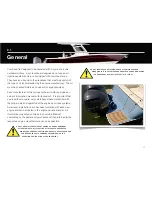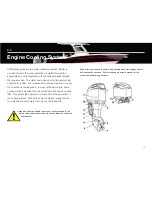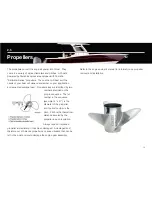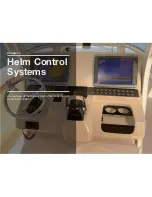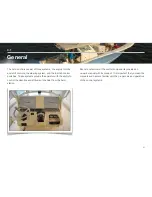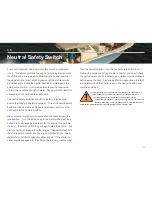
Each outboard motor is a complete drive system with the gear
case being just forward of the propeller and connected to the
power head with a vertical drive shaft. All engines require some
maintenance. Routine maintenance recommended for your
engine is outlined in the engine owner’s manual. Routine
maintenance is normally the primary concern unless the boat is
to be kept in saltwater for extended periods of time. Then the
main concerns are marine growth and galvanic corrosion.
Marine growth occurs when components are left in the water for
extended
periods and
can cause poor
performance or
permanent
damage to the
exposed
components.
The type of
growth and
how quickly it
occurs is relative to the water conditions in your boating area.
Water temperature, pollution, current, etc. can have an e
ff
ect on
marine growth.
Galvanic corrosion is the corrosion process occurring when
di
ff
erent metals are submerged in an electrolyte. Seawater is an
electrolyte and submerged engine components must be properly
protected. Outboard motors are equipped with sacrificial anodes
to prevent galvanic corrosion problems. The anodes must be
monitored and replaced as necessary. For locations and
maintenance, please refer to the engine owner’s manual.
When leaving the boat in the water, tilt the motors as high as
possible. This will decrease the risk of marine growth around
the cooling inlets, propeller and exhaust ports and damage from
galvanic corrosion.
DO NOT PAINT THE OUTBOARD MOTOR WITH ANTIFOULING PAINTS
DESIGNED FOR BOAT HULLS. MANY OF THESE PAINTS CAN CAUSE
SEVERE DAMAGE TO THE ENGINE. CONTACT YOUR SCOUT DEALER OR
ENGINE MANUFACTURER FOR INFORMATION ON THE PROPER
PAINTING PROCEDURES.
2.2
Drive System Corrosion
12
Summary of Contents for 320 LXF
Page 1: ...320 LXF Scout Boats OWNER MANUAL ...
Page 2: ...Chapter 1 Owner s Information Warranty Certification and Boat Information ...
Page 11: ...Chapter 2 Propulsion A guide to your boat s propulsion system ...
Page 32: ...Chapter 4 Fuel System An overview of the fuel system of your boat ...
Page 40: ...Chapter 5 Electrical System An overview of the electrical system of your boat ...
Page 54: ...Chapter 6 Fresh Water System An overview of the fresh water system of your boat ...
Page 59: ...Chapter 7 Raw Water System An overview of the raw water system of your boat ...
Page 65: ...Chapter 8 Drainage System An overview of the drainage system of your boat ...
Page 70: ...Chapter 9 Ventilation System An overview of the ventilation system of your boat ...
Page 73: ...Chapter 10 Exterior Equipment An overview of the exterior equipment on your boat ...
Page 83: ...Chapter 11 Interior Equipment An overview of the interior equipment on your boat ...
Page 88: ...Chapter 12 Safety Equipment An overview of the safety equipment on your boat ...
Page 99: ...Chapter 13 Operation A general guide to operating your boat ...
Page 124: ...Chapter 14 Routine Maintenance A guide to keeping your boat running in good condition ...
Page 147: ...Chapter 16 Appendix Reference documents logs and schematics for your boat ...
Page 154: ...153 ...
Page 155: ...154 ...
Page 156: ...155 ...
Page 157: ...156 ...
Page 159: ...158 ...
Page 160: ...159 ...
Page 162: ...161 ...









